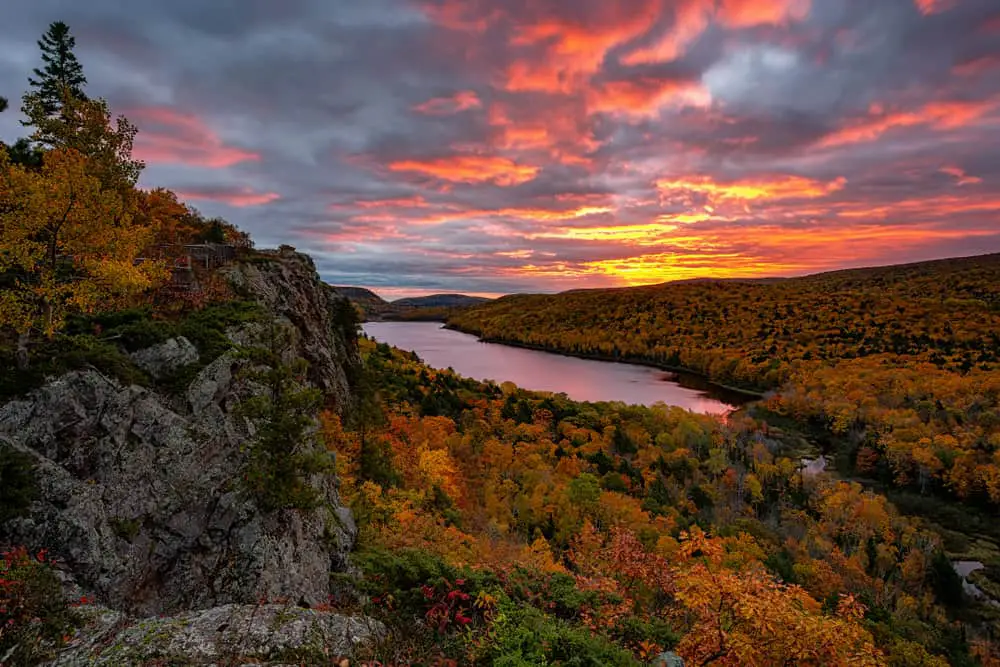
There are four main forest types in Michigan, a vital part of Michigan’s economy and natural habitat. The forests include all deciduous types of forests. However, small coniferous forests in the northern part of the state are mixed together with deciduous trees.
The four types of forests found in Michigan are beech-sugar maple forests, aspen forests, northern hardwood forests, and oak-hickory forests. All the trees in these forests provide a habitat for the countless birds and animals that help create the diverse ecosystem in Michigan.
Table of Contents
Types of Forests In Michigan
Michigan is home to some diverse geography ranging from forested land to beaches with dunes surrounding the lakes. In general, four main types of forests can be found throughout Michigan. These forests are varied, but the majority of the forests are filled with deciduous trees. With only a few coniferous forests to the northern part of the state, conifers are largely outnumbered in Michigan.
A deciduous tree sheds its leaves every year and is usually defined by its large and broad leaves. Deciduous forests are more common in temperate climates and provide suitable habitat for countless birds, mammals, amphibians, and reptiles. Below, let’s take a closer look at the several forest types found throughout the state.
Beech Sugar Maple Forests
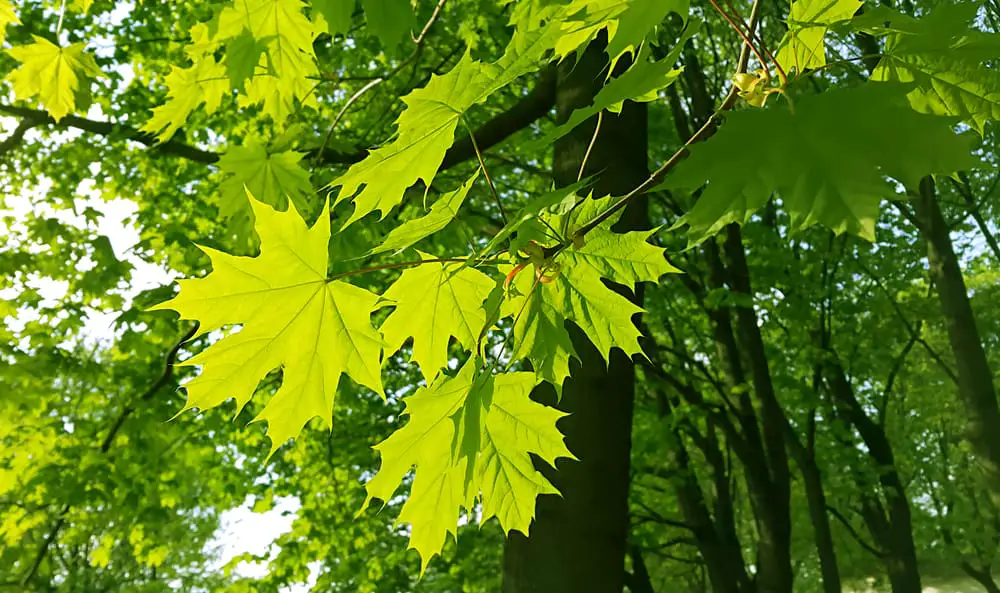
Usually, the beech sugar maple forests are in the southern parts of Michigan. These types of trees have an easier time growing in moist soil and more temperate weather. The trees that live in this type of forest need a long growing season and plenty of nutrients in the soil to keep them well-nourished.
Typical trees found in the beech sugar maple forests of the south include the tulip tree, walnut, black cherry, ash, and basswood trees. Many animals call these forests home, and there are countless species of mammals, reptiles, and birds that live in the southern forests.
It is very common to find woodpecker species, songbirds, raptors, fox, squirrel, rabbit, bats, coyotes, and even moose.
Hardwood Forests
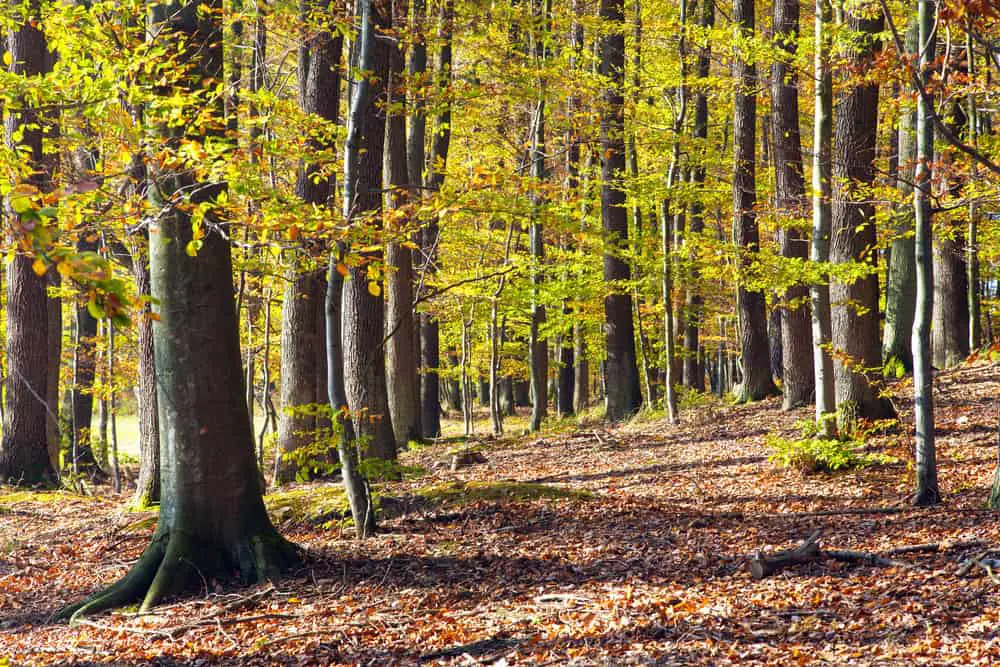
To the north, visitors can find hardwood forests. These forests are extremely similar to the beech-sugar maple forests, but they are located further north, where they experience a shorter growing season due to the changing weather patterns. In this area, expect to see some coniferous trees mixed into the forest as well.
Common tree types to find in the northern hardwood forests include white pines, yellow birches, eastern hemlocks, and norther white cedars. Mixed together with the coniferous trees in the north, it is also possible to find hardy deciduous trees. Hardwood forests also include maple, ash, black cherry, beech, and basswood trees.
Similar mammals live in hardwood forests, and some rare wolf sightings have occurred in the other part of the lower peninsula in Michigan.
Aspen Forests
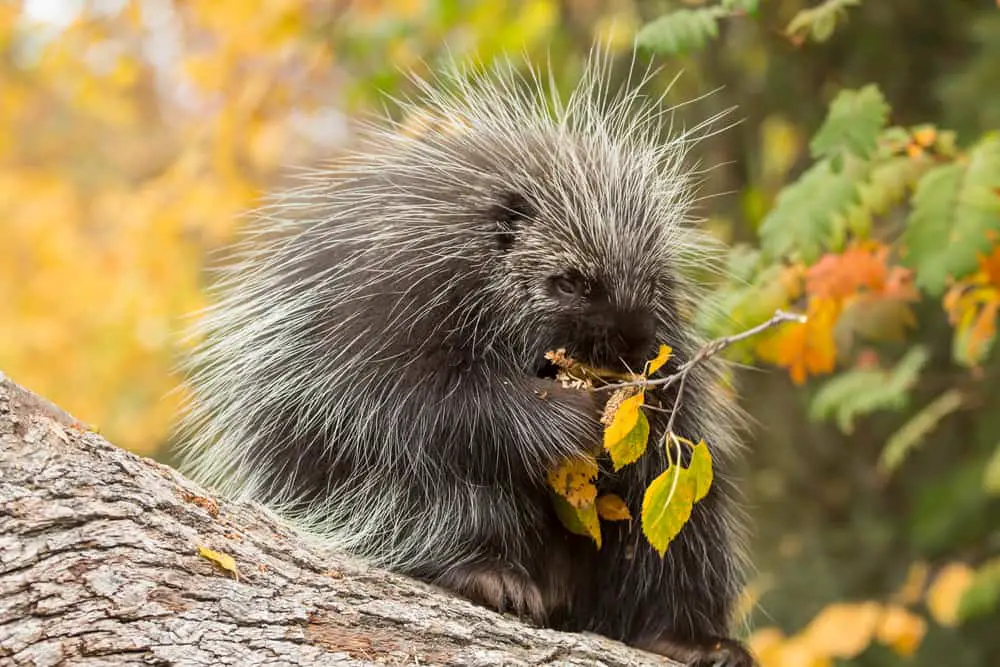
The youngest forests found in Michigan are the aspen forests located in the northern Lower Michigan area and the Upper Peninsula. These forests are dominated by quaking aspen and big-toothed aspen. This type of tree is very tolerant of shady conditions and grows very quickly.
However, because they grow so quickly, the aspen tree is usually short-lived. This factor is part of the reason why the aspen forests are usually so young compared to other forests throughout the area. Visitors can also find white birch, pin cherry, red maple, and balsam fir trees alongside the aspens.
Some coniferous trees like red and white pine trees can also be found in the aspen forests.
Aspen forests have slightly different animal species inhabiting the area. Expect to find some large mammals in the aspen forests, including black bears and porcupines. Small mammals such as the white-footed deer mouse and flying squirrel also live in these forests.
Many birds, like the pileated woodpecker, call the aspen forests home, especially in areas of the aspen forests where there are coniferous trees.
Oak Hickory Forests
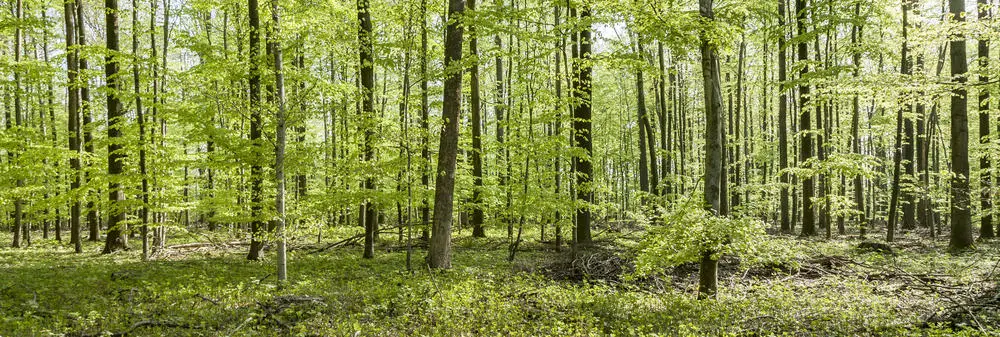
The last forest type found in Michigan is the oak-hickory forests. These forests require very well-drained soil to survive, so they are commonly found in the southern regions of Michigan. Trees found in this area are very drought resistant and are even fire-tolerant, making them exceptionally hardy.
Common tree types found in the oak-hickory forests include pignut hickories, white oak, red oak, pine, oak, and black oak. There are also Shagbark trees commonly found in these dry soil areas. Common deciduous trees, such as maples and beech trees, simply can’t survive the dry soil conditions found in this area.
Animals found in this area of forest differ because of the available food type. The dry soil is able to sustain trees that produce hard nuts. These are most appealing to deer, squirrels, wood ducks, and wild turkeys, which are commonly found in the oak-hickory forests of Michigan.
FAQs
Understanding the many types of forests throughout Michigan can be tricky, especially because several of the forests may look similar with a great deal of overlap between tree species. Having questions surrounding these forests is normal, but we are here to help.
We have put together a list of commonly asked questions related to the types of forests in Michigan to help you better understand these varied and diverse forests.
What kind of forests are in Michigan?
The majority of forests found in Michigan are deciduous forests, although it is common to find a few coniferous forests mixed in. The soil type and weather conditions largely dictate the type of forest.
Toward the north, expect to find dense hardwood forests and beech sugar maple forests. To the south, expect to find young aspen forests and oak-hickory forests.
How many forests are in Michigan?
Within the state of Michigan, there are three national forests. However, there are several dense forests throughout the state, and much of the state’s geography is dominated by forests. 54% of the state is covered with forest, which measures about 20 million acres.
There are 14 billion trees throughout the whole state, making Michigan a very densely forested area perfect for birds and animals to call home.
Are there any old growth forests in Michigan?
Although at one time Michigan had several old-growth forests, today, there is only one place in Michigan where it is still possible to find ancient trees. These trees can be found in Hartwick Pines State Park, which is located on the Lower Peninsula. The oldest trees in Michigan are sugar maples which are around 350 years old.
How much state land is in Michigan?
Compared to other states, Michigan has a significant amount of land dedicated to state land. Michigan state land ownership measures about 4.5 million acres which is nearly 12% of the entire state. The vast majority of state land is forested.
How many tree species does Michigan have?
Visitors are able to find over 100 different species of trees throughout Michigan. Deciduous trees are the most commonly found tree type in Michigan. The most common trees include beech, birch, jack pine, red maple, sugar maple, and eastern cottonwood trees.
What trees will be around the area will depend on the soil type. Throughout Michigan, the soil has a drastic range of moisture levels. While some of the more hardy trees like oaks and hickories can withstand extremely dry soil conditions, trees like maples and beeches need the saturated and moist soil to the north in order to survive.
